Back to the future: Detroit Auto Show returns to January in a changed industry landscape. What to expect
Published in Business News
The Detroit auto circus is back to its January roots — a new show for a new era.
After an epic, media-stuffed, celebrity-encrusted, 30-year run as the world-renowned North American International Auto Show, Motown’s auto-palooza is dropping its international marketing theme and now is simply called the Detroit Auto Show. Its Detroit Autos Dealers Association (DADA) organizers are returning to a Jan. 10-20, regional event after a detour through a pandemic, one Motor Bella, and two September shows while seeking its identity in the post-mega show world.
The last January show was in 2019 — six years and a bygone epoch ago before social media, COVID-19 and compressed vehicle development dislodged auto shows around the world as automakers’ primary venue for vehicle debuts. Stakeholders in the show believe the January dates will increase attendance because the September timeframe interfered with school schedules and the opening of football season.
"Frankly, I was never a fan of moving it. I was opposed to it," said Claude Molinari, president and CEO of Visit Detroit. "Throughout the time, I've been encouraging them to rethink the January timeframe. As a spokesperson for the hospitality community, my stakeholders, the restaurant owners, the hoteliers, they all are very in favor of this. This is a great return to tradition."
Molinari expects more than 1,000 media members for the Jan. 10 Media Day, down significantly from the show’s 1989-2019 heyday. Those glory years were part of an age when international shows — Detroit, Frankfurt/Paris, Tokyo, Geneva — dominated new car debuts.
Detroit joined the party late in 1989 but would become one of the world’s biggest circus dates, attracting at its apex more than 5,000 media, 70 new car debuts, 800,000 public attendees, and the entertainment industry’s top acts. Its jaw-dropping entertainment created indelible images, media careers, and millions of dollars in charitable dollars for Detroit children through the annual Charity Preview.
"It's not like the auto show in Detroit has been challenged more than any other," Molinari said. "The largest auto show in the world used to be the Frankfurt Auto Show. Now, it doesn't exist anymore. It's important to recognize that while this (Detroit) auto show may not reach the levels of what it was, I believe that it is still the most important auto show in the world."
Sam Klemet, co-executive director of the show, said in a recent interview the shift back to January "is a real natural fit. That's where we have historically been. That's kind of where people circle their calendars when you think about the auto show.”
The days of dawn-to-dusk auto reveals are in the rearview mirror. But Sam Fiorani, vice president of global vehicle forecasting at AutoForecast Solutions LLC, said shows like Detroit's still serve an important purpose for the major automakers — converting attendees with some interest in cars into eventual buyers.
He anticipates the Detroit show can still draw big crowds, even without some of the flashiness and news-making of its past: "It's the best way for consumers to look at a number of vehicles in one setting," Fiorani said. "Even when you have the auto mall somewhere, it's very difficult to cross-shop products and see which one fits our needs the best."
Under pressure from global governments to sell EVs, brands at the Detroit Auto Show will have plenty of EVs for consumers to experience. Popular gas Jeeps, Broncos, other SUVs and pickups will be available as well.
Ford Motor Co. appears to be the only automaker planning to make product news this year. “The Detroit Auto Show is a longstanding tradition that brings the community, consumers and car enthusiasts together,” said Ford Product Communications Director Mike Levine. “We’re excited for its return, and we look forward to kicking off the show on January 9 with news and more — plus our full lineup of winning vehicles.”
General Motors Co. will not reveal any all-new vehicles but will have models making their auto show debut. Chevrolet, GMC, Buick and Cadillac will all have floor displays.
“We are excited and proud to be coming to our hometown auto show with our incredible EV portfolio, that is the largest, most diverse and has the longest range, and our internal combustion powered vehicles that people know and love," GM spokesperson Sabin Blake said in a statement.
Stellantis NV will have six of its brands on display: Alfa Romeo, Chrysler, Dodge, Fiat, Jeep and Ram. The transatlantic automaker is packing its indoor Camp Jeep consumer test track, but is not planning any product reveals. Among its featured models: the Dodge Charger Daytona EV, electric Jeep Wagoneer S, Ram 2500/3500 Heavy Duty pickups and 1500 RHO supertruck.
Toyota Motor Corp. will have its full North American lineup on display, including the all-new 2025 Toyota 4Runner.
All told, DADA touts 34 brands for this year’s show, including 12 ultra-luxury and exotic makes inside The Gallery. The four indoor consumer tracks include the Ford Bronco Built Wild Track and Camp Jeep’s off-road trail simulation. Outside, a Detroit Grand Prix-themed outdoor tour incorporates some of the signature elements of the street circuit and showcases gas-powered, hybrid and all-electric vehicles from Buick, Ford, Honda, Mazda and Volkswagen.
Show organizers have curated a showcase of more than 150 vehicles in partnership with Modded Detroit, a Michigan automotive enthusiast group. “Modded” or modified vehicles have a blend of high-performance tweaks and exterior cosmetic enhancements.
"There is going to be something for everyone," co-director Klemet said. "That's what you want it to be."
The big idea
Since its founding in 1907, the Detroit show — like the New York, Chicago and Los Angeles shows — was for most of its life a local, dealer-organized event overshadowed by glitzy, manufacturer-organized exhibits in foreign metropolises like Frankfurt and Tokyo.
In the late 1980s, DADA members David Fischer, Ken Meade, Gordon Steward and Bob Thibodeau Sr. led a vision for Detroit to join their ranks as the biggest show in the richest consumer market on the planet. They circled the globe, recruited automakers and hired Orange County, California, auto show director Rod Alberts as their savvy circus ringmaster.
“Fischer and I went all over the world to learn from other shows,” remembered Meade, the now-retired president of Meade Toyota-Lexus of Southfield. “We had to do something different. People said we couldn’t do what the international shows did, but somehow, we did it.”
The 1989 show was rebranded as NAIAS. The goal? To put Detroit on the map with other international shows. “There is no place that has more auto history than Detroit,” said Doug North, who took over North Brothers Ford in Westland in 1990 and would ultimately rise to NAIAS chairman in 2020. “It came at a great time, as we kicked off a new year.”
Alberts had run regional shows from Arkansas to Orange County. “It started with a big idea to see if we could make things happen,” he said in an interview. “Chicago had been the largest show in the U.S. We traveled to Japan, Geneva, Frankfurt, Paris to learn best practices. We met with every auto manufacturer. We learned by living it.”
Meade and Fischer’s dealership connections to Toyota and Nissan proved crucial to launching the rebranded show with a bang. Both Japanese manufacturers were introducing their new luxury brands, Lexus and Infiniti, and they chose Detroit as their kickoff.
The launch of the all-new Lexus LS 400 and Infiniti Q45 flagship sedans at the 1989 show created headlines across the globe. And that instantly gave Detroit credibility as a show — not just for Detroit-based automakers — but for global brands to make their mark.
It didn’t take long before the home teams spun their own Motown hits. In 1992, Jeep debuted its new Grand Cherokee SUV by crashing it through the front window of Cobo Hall — with Chrysler Corp. Vice Chairman “Maximum Bob” Lutz at the wheel and Mayor Coleman Young riding shotgun.
“It was a brilliant demonstration of how you can use a low-cost PR stunt to far more effect at a product introduction than you could ever get from conventional advertising,” Lutz told The Detroit News in an interview. “That stunt was on every TV station, every major news media in the U.S. — and around the world.”
Part of Jeep’s 1992 planning team was communications whiz Jason Vines, a natural-born showman who marveled at the stunt’s media impact and would go on to create some of the show’s most memorable debuts for Chrysler and Nissan. As the first auto show of the year — and one of the most heavily attended media events this side of the Super Bowl — NAIAS became a linchpin of automakers’ product plans.
“We weren’t just launching a vehicle, we were launching an experience,” Vines said in an interview. And the show had to go on no matter what.
In January 1999, a blizzard buried Detroit under two feet of snow, paralyzing the city and Detroit Metro Airport. Nissan had targeted NAIAS for the launch of a rugged, off-road-focused SUV called the Xterra — the first Nissan developed entirely in the United States and a key piece of the brand’s future.
With commercial flights grounded, Vines’ Los Angeles-based team chartered a private jet to get into Detroit in time to pull off the reveal.
“In 1999, Nissan didn’t have two yen to rub together, but we had to pull off the Xterra reveal,” remembered Vines of the pricey trip from California to the Motor City. “We had created a giant backpack for the Xterra to emerge from on stage. The reveal got huge media coverage.”
The Roarin’ ’90s
From Asian to American to European brands, NAIAS steadily built an industry juggernaut.
Starting with seven to eight vehicle debuts at the beginning of the 1990s, the show introduced more than 40 new cars by 1999. Vines & Co. continued to ratchet up the entertainment factor, including the 1995 introduction of the first dual sliding-door minivans: Lutz and Chrysler Chairman Bob Eaton read giant children's books in Mr. Rogers-style sweaters while Kermit the Frog drove a red Dodge Caravan over their heads and onto a fake pond’s lily pads, drenching media with water.
"It took years of incremental growth,” Alberts said. “Auto supplier Heinz Prechter would bring us three or four aftermarket cars in the early 1990s. Then, in the mid-1990s, Volkswagen came to us with a proposal to build a huge display — a wall — to introduce the New Beetle. That started the big structures.”
The New Beetle’s 1998 introduction was a sensation, as was its on-site café. “That really jacked up the price,” laughed Vines. “Now all the manufacturers had to have cafés to entertain the media. In 2001, we opened up the historic Detroit Firehouse across the street complete with (DaimlerChrysler CEO Dieter) Zetsche tending the bar.”
Summit
With the turn of the century, the show was in full stride. Each year featured over 40 car reveals (hitting a record 79 reveals in 2004), more extravagant debuts, and a steady stream of celebrities, politicians and U.S. presidents. January 2003 would set a record public attendance of 838,066.
“We were the place to be seen. We had a constant stream of celebrities coming through,” said Alberts. “Some were here to introduce cars like David Spade and Eva Longoria. But others like Michael Strahan, Billy Joel, Mickey Rooney, Tony Danza and Michael Jordan were here just here to see the show.”
NAIAS burst at the seams to find real estate to showcase its new wares. To entertain a record 5,500 media members in 2008, General Motors took over the Detroit waterfront north of the Ren Cen with a sprawling display of concept cars accompanied by Kid Rock, Maroon 5, Mary J Blige and Jimmy Kimmel.
The show’s annual Charity Preview (aided by superstars like Celine Dion, who crooned her single "I Drove All Night” in 2008) also proved a boon to Detroit, raising millions for local children’s and police organizations.
“There was so much going on at each show,” said DADA member North. “Presidents, senators, governors were here. The Ford Dealer Group would host a big party after the Charity Preview and many of Ford’s executives would join us.”
The 2008 show was also memorable for another Chrysler stunt featuring 120 longhorn steers (plus cowboy escorts) imported from Oklahoma to accompany the all-new 2009 Dodge Ram pickup. “The video went viral around the world,” recalled Vines.
The 2009 Great Recession and the bankruptcies of GM and Chrysler proved a momentary speed bump as automakers pulled back under financial distress. But NAIAS rebounded, attracting 815,575 attendees (the largest since 2003) in 2016. The ‘16 show’s 700,000 square feet was packed with cars, stages and jumbotron LED displays. Automakers spent $200 million on exhibits — 80% of them new.
“This is transformative. It supersedes anything at a major concert or the Super Bowl,” said John Tulloch, executive producer of Auburn Hills-based George P. Johnson, which helped set up Fiat Chrysler Automobiles’ stage. “Our display is at an Olympic level never seen at an auto show anywhere in the world.”
In the wilderness
Back at the top of the world, Detroit’s 2017 mega-show was starting to show cracks.
Social media was changing the media game, allowing automakers to introduce new cars on their own schedule rather than competing with rivals for attention on crowded show floors. Industry practices were also changing as vehicle development times shrunk and concept cars became less relevant.
“Concepts were expensive to build, and it cost a lot to debut them,” said Alberts. “They made up about half of our debuts, so as the industry cut back, that impacted us.”
The same digital tech that was altering the media landscape and accelerating model timelines also fueled interest in January’s Consumer Electronics Show, diverting media attention to Las Vegas. NAIAS tried to adapt — opening its own technology forum, Automobili-D, in 2017 — then moving the show out of its January time slot altogether to new June dates in 2020.
NAIAS 2020 never occurred, a casualty of the COVID pandemic.
Straining to stay relevant in a world roiled by government pandemic restrictions and changing automaker demands, NAIAS landed at Oakland County’s M1 Concourse for Motor Bella in 2021. It returned to Cobo — now Huntington Place — in the fall of 2022 and 2023, its interior transformed from giant, vertical LED displays to horizontal test tracks for electric vehicles.
“The 2025 show has come full circle to be more consumer-focused than ever before,” said Alberts, who will co-direct the show for 2025, his last. “With crisis comes opportunity, and we know that people want to get into cars more than ever before. We have four tracks this year for EVs, gas cars, hybrids.”
2025 Detroit Auto Show schedule
Friday, Jan. 10: Media day, which includes the announcement of the 2025 winners of the North American Car, Truck and Utility Vehicle of the Year (NACTOY) awards and EyesOn Design Awards
Friday, Jan. 10: Charity Preview to cap off the first day of the show.
Saturday, Jan. 11 through Monday, Jan. 20: Public show dates. Hours are 10 a.m.-8 p.m. daily except for 1-8 p.m. Wednesday, Jan. 15 and Jan. 16, and 10 a.m.-7 p.m. Monday, Jan. 20
Wednesday, Jan. 15 and Thursday, Jan. 16: Industry days with a mobility global forum and AutoMobili-D technology showcase, and Future Innovators, a new program with 1,000-plus high school and college students invited to visit the show to learn about career opportunities.
Monday, Jan. 20: The show will have special programming for the Martin Luther King Jr. holiday.
Tickets: Adults $20, seniors 65 and older $12, kids ages 3-12, $10
Visit detroitautoshow.com for up-to-date show details.
(Staff Writer Luke Ramseth contributed.)
©2025 www.detroitnews.com. Visit at detroitnews.com. Distributed by Tribune Content Agency, LLC.


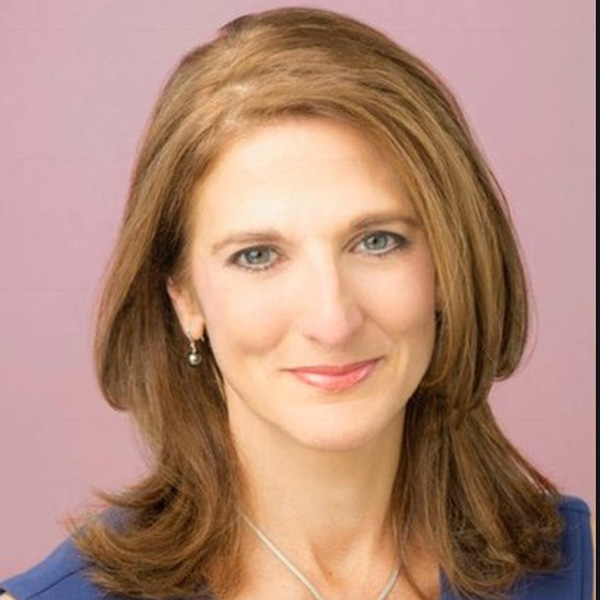
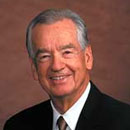
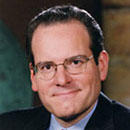
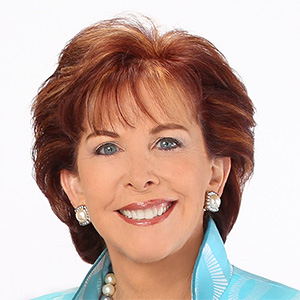



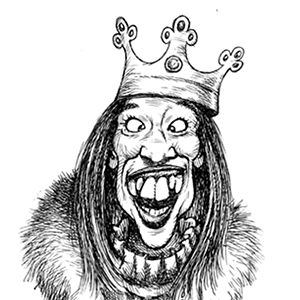
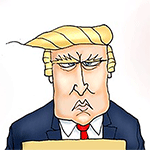

Comments